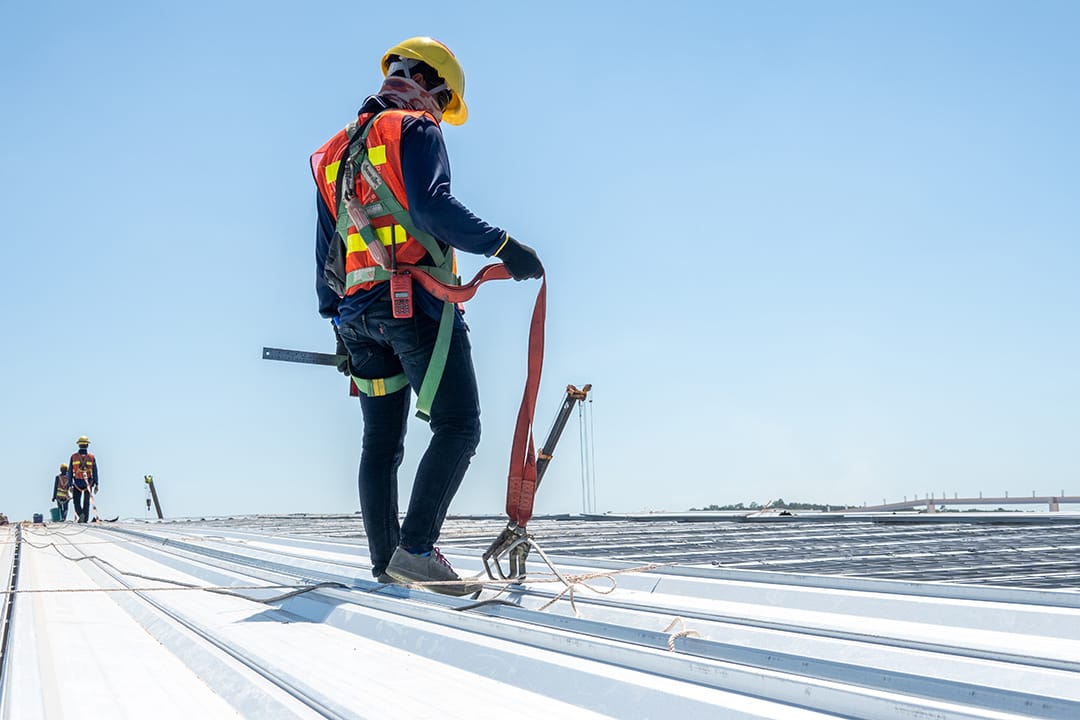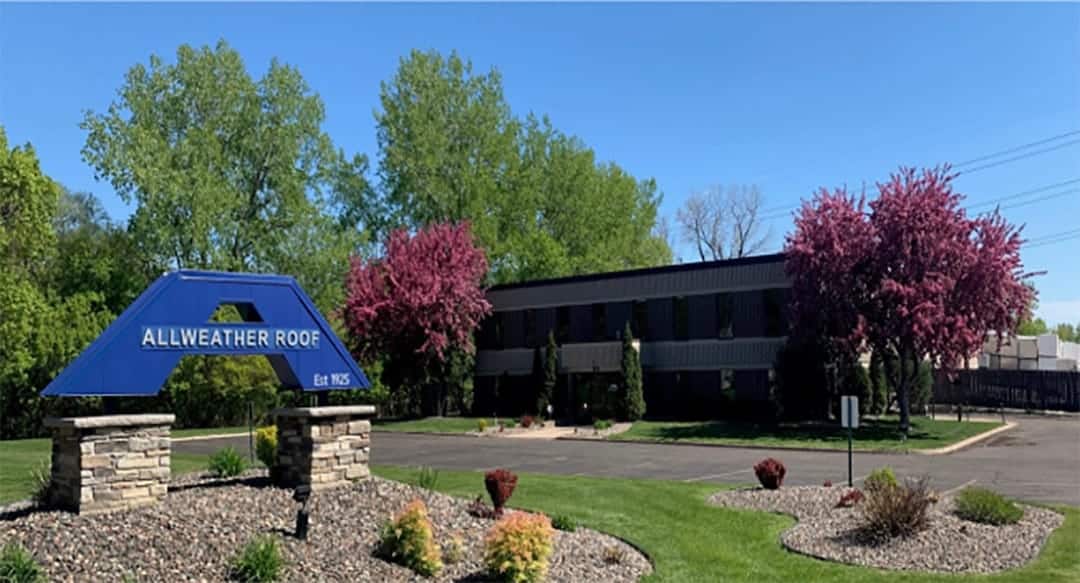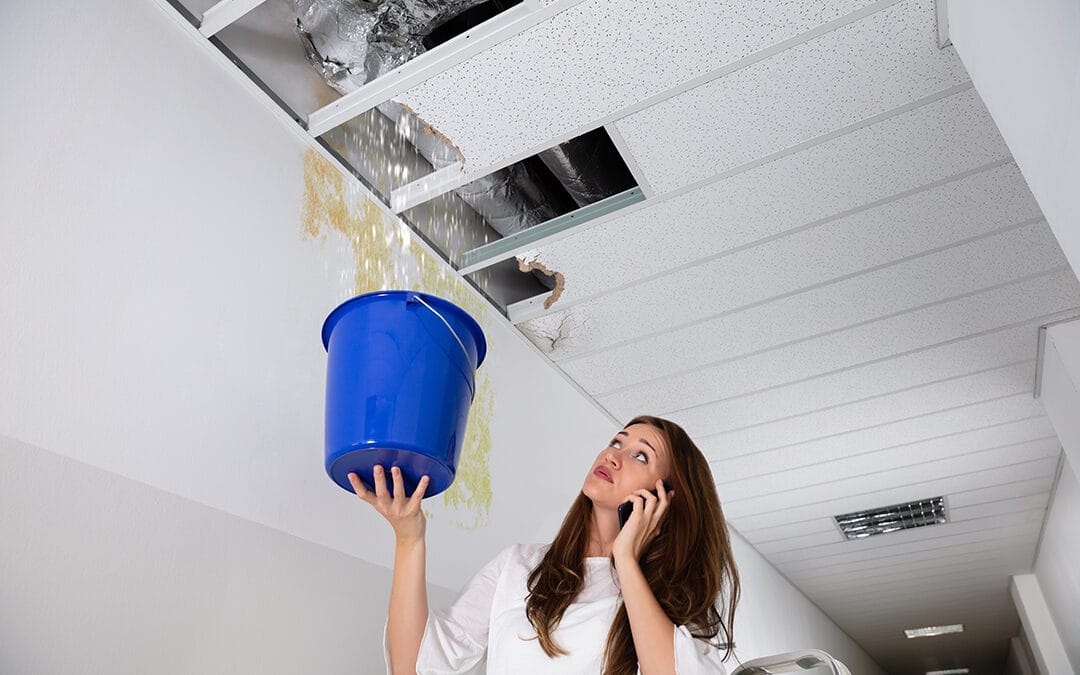Are you aware that nearly 50% of commercial roofing failures stem from preventable mistakes? In this post, I’ll highlight critical errors to dodge when managing your commercial roofing in Minnesota. We’ll discuss the necessity of regular inspections, the dangers of DIY repairs, and how technology can enhance roof management. By following these guidelines, you can prevent unnecessary expenses and ensure your roof remains in top condition, giving you peace of mind and saving you money in the long run. Engaging with this content will connect you with vital tips that will guide you towards top-tier commercial roofing services and ensure your roof‘s longevity.
Key Takeaways
-
Assess roofing materials for durability to extend the lifespan of commercial roofs
-
Follow proper installation techniques to avoid costly repairs and ensure roof integrity
-
Conduct regular inspections to catch potential issues early and maintain roof health
-
Understand warranties and maintenance requirements to protect your investment effectively
-
Utilize technology and data analytics to enhance roof management and improve efficiency
Identify Common Commercial Roofing Errors You Should Avoid
When tackling commercial roofing projects with commercial roofing in Minnesota, it’s essential to steer clear of common errors that can jeopardize the outcome. I emphasize the importance of assessing the quality of roofing materials for durability, ensuring proper installation techniques during the project, and verifying the roof’s slope and drainage with Top-Tier Commercial Roofing Services. It’s also crucial to fully understand all warranties and guarantees while examining the roof for signs of wear after installation. For any necessary repairs, consulting Roof Repair Experts is recommended.
Assess the Quality of Roofing Materials for Durability
Additionally, checking for certifications and performance ratings of the materials helps make informed choices. I recommend collaborating with trusted suppliers who provide detailed specifications and guarantees for their products. These actions will not only prevent premature failures but also aid in effective roof maintenance strategies:
|
Material Type
|
Durability Factor
|
Common Uses
|
|---|---|---|
|
TPO
|
Excellent UV resistance
|
Low-slope roofing
|
|
EPDM
|
Long lifespan (up to 30 years)
|
Flat roofs
|
|
Metal
|
High winds and moisture resistance
|
Pitched roofs
|

Regularly inspecting your roof helps to avoid costly repairs.
Check for Proper Installation Techniques During the Project
Verify the Roof‘s Slope and Drainage With Professional Guidance
Ensure All Warranties and Guarantees Are Understood
Additionally, warranties often come with specific maintenance requirements that must be followed to remain valid. I advise keeping records of all maintenance work conducted on the roof, as this documentation can be essential in the event of a claim. By staying informed about warranty details and adhering to the stipulated guidelines, I can protect my investment and avoid significant financial burdens in the future.
|
Type of Warranty
|
Coverage
|
Duration
|
|---|---|---|
|
Material Warranty
|
Covers defects in roofing materials
|
Typically 10-30 years
|
|
Workmanship Warranty
|
Protects against poor installation
|
Usually 1-5 years
|
|
Leak Warranty
|
Covers leaks under specific conditions
|
Varies by manufacturer
|
Examine the Roof for Signs of Wear After Installation
Understand the Importance of Regular Roof Inspections
Schedule Annual Inspections With Certified Professionals
Look for Signs of Water Damage or Leaks
Inspect Flashing and Seams for Integrity
-
Conduct regular inspections of flashings and seams.
-
Check for gaps or signs of damage.
-
Address any issues promptly to prevent leaks.
Record and Prioritize Any Repairs Needed
Maintain Documentation of Past Inspections

Learn About Budgeting for Commercial Roofing Projects
I focus on the importance of creating a detailed budget that covers all stages of commercial roofing projects. It’s essential to factor in long-term maintenance costs and research financing options available for these projects. Planning for unexpected expenses during construction can save time and money, while comparing quotes from multiple roofing contractors ensures competitive pricing and quality work.
Create a Detailed Budget Covering All Stages of Roofing
Moreover, I recommend setting aside a contingency fund for unexpected expenses that may arise during the project. During my past projects, I often faced hidden issues that required additional resources to address. To keep track of everything, I maintain a clear outline of the budget that includes:
-
Initial estimates for materials and labor
-
Costs for inspections and permits
-
A contingency fund for unexpected repairs
-
Long-term maintenance costs
Factor in Long-Term Maintenance Costs
I’ve learned that a lack of attention to maintenance can lead to significant costs that property owners often overlook. For instance, while high-quality roofing materials may have a higher initial cost, they often require less maintenance, saving money in the long run. I recommend creating a detailed budget that includes not only the initial roofing expenses but also a projected cost plan for ongoing maintenance needs:
-
Set aside funds for regular roof inspections.
-
Budget for minor repairs and maintenance tasks.
-
Choose high-quality materials to reduce future costs.
Research Financing Options Available for Commercial Projects
Additionally, I’ve found that understanding the long-term benefits of financing can lead to smarter investment decisions. By calculating the potential return on investment from energy-efficient roofing systems or enhanced property value, I can justify the costs associated with high-quality materials and installation. Seeking advice from financial advisors or contractors with experience in roofing can provide valuable insights that ultimately help in making informed budgeting choices that suit both immediate and future needs.
Plan for Unexpected Expenses During Construction
From my experience, being proactive in anticipating potential expenses can save considerable headaches later on. I recall a project where we encountered unanticipated structural repairs that arose after removing the old roofing. Having pre-allocated funds allowed us to manage these costs seamlessly and keep the project on track. By incorporating this financial cushion, I ensure that my commercial roofing projects remain on schedule and within budget, ultimately protecting my investment and providing peace of mind.
Compare Quotes From Multiple Roofing Contractors
Additionally, talking directly with each contractor allows me to gauge their level of expertise and professionalism. For instance, during consultations, I ask about their experience with similar projects and request references from past clients. This helps me understand their work ethics and reliability, which are just as important as the numbers on the quotes. Ultimately, this comparison process not only aids in budgeting but also sets the stage for a successful roofing project that meets my expectations and needs.
Recognize the Risks of DIY Commercial Roofing Work
Before taking on commercial roofing projects, I stress the importance of evaluating your skill level. Understanding local building codes and regulations is essential to ensure compliance. Additionally, I emphasize the risks involved in working at heights and the need for proper safety equipment and tools. Finally, I guide readers on identifying when it’s wiser to hire a professional. Each of these factors is crucial for a safe and successful roofing endeavor.
Evaluate Your Own Skill Level Before Beginning Work
In my journey, I’ve learned that even minor oversights during DIY roofing work can lead to significant issues down the line, such as water leaks or structural failures. I always ask myself if I have the right tools and knowledge for the task at hand. By acknowledging my limitations, I can avoid unnecessary risks that could jeopardize the roof‘s integrity and ultimately protect both my investment and safety.
Understand Local Building Codes and Regulations
In my experience, consulting with local authorities or utilizing resources like city websites helps clarify any regulations I must follow. I remember a project where I missed specific load-bearing guidelines, leading to costly adjustments after installation. Engaging with professionals who are well-versed in these codes not only saves time and money but also protects my investment, ensuring that the completed roof is structurally sound and legally compliant.
Consider the Risks Involved in Working at Heights
Moreover, I understand that environmental factors—such as wind or wet surfaces—can further complicate working conditions on a roof. During my time in commercial roofing, I’ve experienced how changing weather conditions can impact stability, increasing the risk of accidents. It’s essential for anyone considering a DIY approach to acknowledge these dangers and evaluate whether hiring a professional might be the safer and more efficient choice for these high-stakes tasks.
Assess Proper Safety Equipment and Tools Needed to Avoid Mistakes
Along with personal protective equipment, I pay close attention to the tools I use, such as scaffolding and ladders that meet safety regulations. Ensuring these tools are in good condition and designed for the specific type of roofing work I’m undertaking prevents unnecessary mishaps. For instance, I once encountered a situation where a faulty ladder led to a minor incident, emphasizing the importance of using reliable equipment for roof projects to maintain both safety and efficiency.
Identify When to Hire a Professional Instead
Furthermore, I recognize that liability is a significant factor in deciding to hire a professional. Roofing work often involves risks such as working at heights, which can be dangerous without the proper training and equipment. Engaging a professional not only mitigates these safety concerns but also provides me with peace of mind, knowing that the work will comply with local building codes and regulations. This level of assurance outweighs the initial costs of hiring an expert, making it a wise investment for my roofing needs.
Mitigate Weather-Related Challenges on Commercial Roofs
To effectively manage weather-related challenges on commercial roofs, I focus on several key strategies. First, I implement weather-resistant roofing materials to improve long-term durability. Next, developing a plan for seasonal maintenance tasks helps ensure the roof is ready for varying weather conditions. I always monitor weather forecasts for potential storm impacts and inspect the roof after severe weather events. Addressing any damage promptly is essential in preventing further issues, safeguarding both the roof and the structure beneath it.
Implement Weather-Resistant Roofing Materials
Moreover, I ensure that the chosen materials meet performance standards suited for specific environmental challenges. For instance, using metal roofing can provide enhanced durability in regions prone to heavy winds or snow. By prioritizing weather-resistant options, I create a protective barrier that helps safeguard the building, ultimately preserving the investment and minimizing potential disruptions to business operations.
Develop a Plan for Seasonal Maintenance Tasks
By implementing a schedule for seasonal maintenance tasks, I can address issues before they escalate into costly repairs. For instance, I prioritize cleaning gutters and downspouts before heavy rainfall to prevent water buildup. This planned maintenance helps maintain the roof’s integrity and extends its lifespan, ultimately protecting my investment and ensuring the premises remain safe for occupants:
-
Conduct a thorough inspection before seasonal changes.
-
Clean gutters and drainage systems regularly.
-
Check for loose flashing and repair as needed.
Monitor Weather Forecasts for Potential Storm Impacts
In my experience, integrating weather monitoring into my routine maintenance plan helps mitigate risks associated with storms. By leveraging technology, such as mobile apps or online resources, I can receive timely alerts that keep me ahead of any weather-related challenges. This proactive approach not only minimizes potential damage but also ensures that the roofing system remains intact and functional for the long term.
Inspect the Roof After Severe Weather Events
I recommend inspecting not just the surface but also areas like flashings, seams, and drainage systems. Look for debris accumulation that could obstruct water flow, and ensure that all components remain intact. My experience shows that addressing these details promptly protects the integrity of the roof and significantly extends its lifespan, ultimately providing peace of mind for property owners.
Address Any Damage Promptly to Prevent Further Issues
After severe weather events, I always recommend conducting a thorough assessment of the roof to catch any signs of damage early. By examining vulnerable areas, such as flashings and seams, I can identify problems before they escalate. Timely repairs not only protect the integrity of the roofing system but also extend its lifespan and maintain the building’s value:
|
Potential Damage
|
Consequences of Delaying Repairs
|
Recommended Action
|
|---|---|---|
|
Minor Leaks
|
Water damage and mold growth
|
Repair immediately
|
|
Crumbling Flashing
|
Increased risk of leaks
|
Replace promptly
|
|
Damaged Seams
|
Structural integrity issues
|
Reinforce or reseal
|
Utilize Technology for Improved Roof Management
Utilizing technology can significantly enhance roof management and help avoid common commercial roofing mistakes. I recommend exploring digital tools for roof monitoring, which streamline maintenance scheduling and improve overall efficiency. Additionally, using drones for aerial inspections allows for thorough assessments and helps identify issues quickly. Analyzing data from roofing systems keeps track of performance, while staying updated on new roofing technologies ensures that you’re leveraging the best solutions for your building.
Explore Digital Tools for Roof Monitoring
I’ve found that using drones for aerial inspections adds another layer of efficiency to roof monitoring. This technology enables me to capture high-resolution images and detailed data from hard-to-reach areas, ensuring a thorough assessment without compromising safety. By integrating these digital tools, I can make informed decisions based on accurate information, addressing potential problems swiftly and preventing common commercial roofing mistakes.
Incorporate Software for Maintenance Scheduling
I’ve seen firsthand how effective maintenance scheduling software enhances communication among team members involved in roof management. With access to shared calendars and task lists, all stakeholders can stay informed about upcoming maintenance needs, improving coordination and accountability. This not only streamlines our processes but also assures that no maintenance tasks slip through the cracks, ultimately protecting my investment and extending the roof’s lifespan.
Use Drones for Aerial Inspections and Assessments
Implementing drone technology not only saves time but also enhances overall roof management strategies. With the data collected from aerial assessments, I can create detailed reports that highlight specific areas requiring attention, which makes scheduling maintenance more straightforward. Moreover, integrating these insights into my regular inspections helps me maintain the integrity of the roofing system and prolong its lifespan, ultimately protecting my investment in commercial properties.
Analyze Data From Roofing Systems for Efficiency
-
Collect performance metrics regularly.
-
Optimize maintenance schedules based on insights.
-
Track environmental factors influencing roof condition.
Stay Updated on New Roofing Technologies and Innovations
Moreover, participating in industry seminars and reading trade publications helps me remain informed about the latest techniques and materials in commercial roofing. This knowledge allows me to select innovative options that align with building codes and best practices, ensuring my roofing projects are compliant and effective. By prioritizing continuous learning, I can avoid common pitfalls and make informed decisions that benefit both the roofing system and the overall investment.
Frequently Asked Questions
What are the most common mistakes in commercial roofing?
Common mistakes in commercial roofing include improper installation, neglecting regular maintenance, failing to choose the right materials, and overlooking drainage issues, which can lead to leaks and costly damage.
Why are regular roof inspections essential for commercial buildings?
Regular roof inspections are vital for commercial buildings as they identify potential issues early, prevent costly repairs, extend roof lifespan, and ensure safety and compliance with local regulations. Timely assessments help maintain building integrity and protect property investments.
How should I budget for a commercial roofing project?
To budget for a commercial roofing project, assess material costs, labor expenses, and additional services. Consider unexpected expenses and ensure to include maintenance, permits, and inspections for a complete financial plan.
What are the risks of handling commercial roofing work myself?
Handling commercial roofing work independently carries significant risks, including potential injury, improper installation, and safety violations. These factors can lead to costly repairs and increased liability, ultimately outweighing any savings from DIY efforts.
How can technology improve commercial roof management?
Technology enhances commercial roof management through advanced monitoring systems, predictive maintenance tools, and data analytics. These innovations ensure timely repairs, optimize lifespan, and reduce operational costs, ultimately boosting the overall efficiency of roof management practices.
Conclusion


